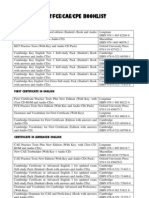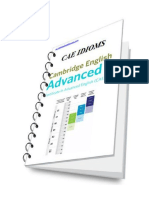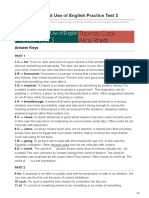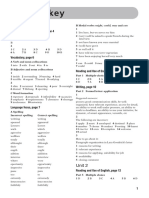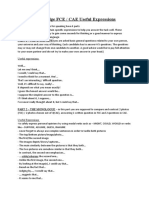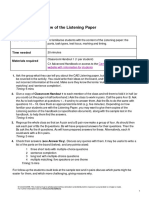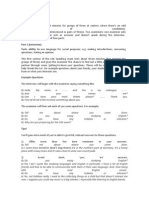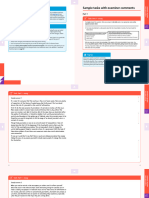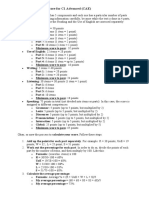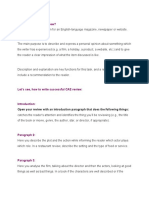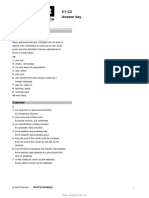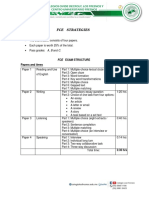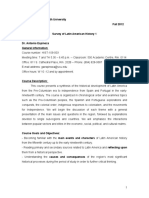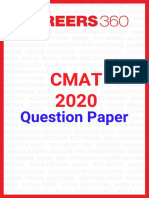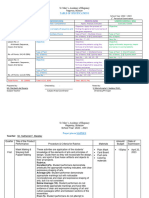0% found this document useful (0 votes)
344 views21 pagesCAE Preparation Guide (Slides)
This document provides an overview of the Cambridge Exam for Certificate in Advanced English (CAE). It describes the format and scoring of the exam which consists of Reading and Use of English, Writing, Listening, and Speaking sections. Each section is worth 25% of the total score. Tips are provided on how to prepare and practice for each section, as well as dos and don'ts for the exam.
Uploaded by
Mariana GregoCopyright
© © All Rights Reserved
We take content rights seriously. If you suspect this is your content, claim it here.
Available Formats
Download as PDF, TXT or read online on Scribd
0% found this document useful (0 votes)
344 views21 pagesCAE Preparation Guide (Slides)
This document provides an overview of the Cambridge Exam for Certificate in Advanced English (CAE). It describes the format and scoring of the exam which consists of Reading and Use of English, Writing, Listening, and Speaking sections. Each section is worth 25% of the total score. Tips are provided on how to prepare and practice for each section, as well as dos and don'ts for the exam.
Uploaded by
Mariana GregoCopyright
© © All Rights Reserved
We take content rights seriously. If you suspect this is your content, claim it here.
Available Formats
Download as PDF, TXT or read online on Scribd
/ 21
